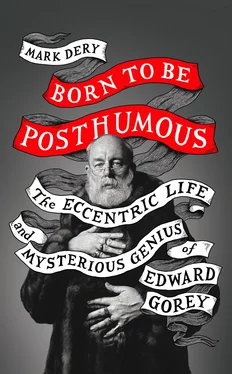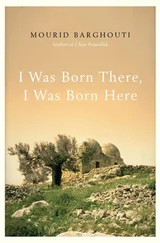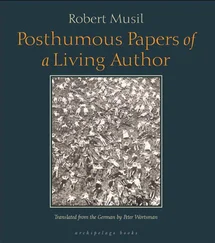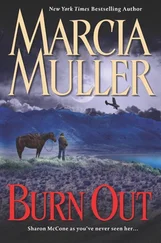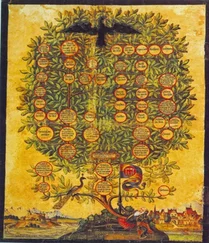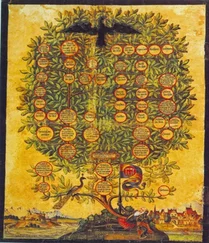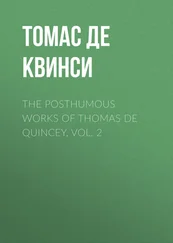*Publishers, dates of publication, and related details can be found, with a few exceptions, in “A Gorey Bibliography” at the end of this book. Quoted matter isn’t cited in endnotes for the simple reason that nearly all Gorey’s books are unpaginated; even so, readers shouldn’t have much trouble tracking down quotations, since few Gorey titles are longer than thirty pages.
CHAPTER 1 CONTENTS Cover Title Page Copyright Praise Dedication For Margot Mifflin, whose wild surmise—“What about a Gorey biography?”—begat this book. Without her unwavering support, generous beyond measure, it would have remained just that: a gleam in her eye. I owe her this—and more than tongue can tell. Introduction: A Good Mystery CHAPTER 1: A Suspiciously Normal Childhood: Chicago, 1925–44 CHAPTER 2: Mauve Sunsets: Dugway, 1944–46 CHAPTER 3: “Terribly Intellectual and Avant-Garde and All That Jazz”: Harvard, 1946–50 CHAPTER 4: Sacred Monsters: Cambridge, 1950–53 CHAPTER 5: “Like a Captive Balloon, Motionless Between Sky and Earth”: New York, 1953 CHAPTER 6: Hobbies Odd—Ballet, the Gotham Book Mart, Silent Film, Feuillade: 1953 CHAPTER 7: Épater le Bourgeois: 1954–58 CHAPTER 8: “Working Perversely to Please Himself”: 1959–63 CHAPTER 9: Nursery Crimes— The Gashlycrumb Tinies and Other Outrages: 1963 CHAPTER 10: Worshipping in Balanchine’s Temple: 1964–67 CHAPTER 11: Mail Bonding—Collaborations: 1967–72 CHAPTER 12: Dracula: 1973–78 CHAPTER 13: Mystery!: 1979–85 CHAPTER 14: Strawberry Lane Forever: Cape Cod, 1985–2000 CHAPTER 15: Flapping Ankles, Crazed Teacups, and Other Entertainments CHAPTER 16: “Awake in the Dark of Night Thinking Gorey Thoughts” CHAPTER 17: The Curtain Falls Notes A Note on Sources A Gorey Bibliography Index Acknowledgments About the Author Also by Mark Dery About the Publisher
A SUSPICIOUSLY NORMAL CHILDHOOD CONTENTS Cover Title Page Copyright Praise Dedication For Margot Mifflin, whose wild surmise—“What about a Gorey biography?”—begat this book. Without her unwavering support, generous beyond measure, it would have remained just that: a gleam in her eye. I owe her this—and more than tongue can tell. Introduction: A Good Mystery CHAPTER 1: A Suspiciously Normal Childhood: Chicago, 1925–44 CHAPTER 2: Mauve Sunsets: Dugway, 1944–46 CHAPTER 3: “Terribly Intellectual and Avant-Garde and All That Jazz”: Harvard, 1946–50 CHAPTER 4: Sacred Monsters: Cambridge, 1950–53 CHAPTER 5: “Like a Captive Balloon, Motionless Between Sky and Earth”: New York, 1953 CHAPTER 6: Hobbies Odd—Ballet, the Gotham Book Mart, Silent Film, Feuillade: 1953 CHAPTER 7: Épater le Bourgeois: 1954–58 CHAPTER 8: “Working Perversely to Please Himself”: 1959–63 CHAPTER 9: Nursery Crimes— The Gashlycrumb Tinies and Other Outrages: 1963 CHAPTER 10: Worshipping in Balanchine’s Temple: 1964–67 CHAPTER 11: Mail Bonding—Collaborations: 1967–72 CHAPTER 12: Dracula: 1973–78 CHAPTER 13: Mystery!: 1979–85 CHAPTER 14: Strawberry Lane Forever: Cape Cod, 1985–2000 CHAPTER 15: Flapping Ankles, Crazed Teacups, and Other Entertainments CHAPTER 16: “Awake in the Dark of Night Thinking Gorey Thoughts” CHAPTER 17: The Curtain Falls Notes A Note on Sources A Gorey Bibliography Index Acknowledgments About the Author Also by Mark Dery About the Publisher
Chicago, 1925–44
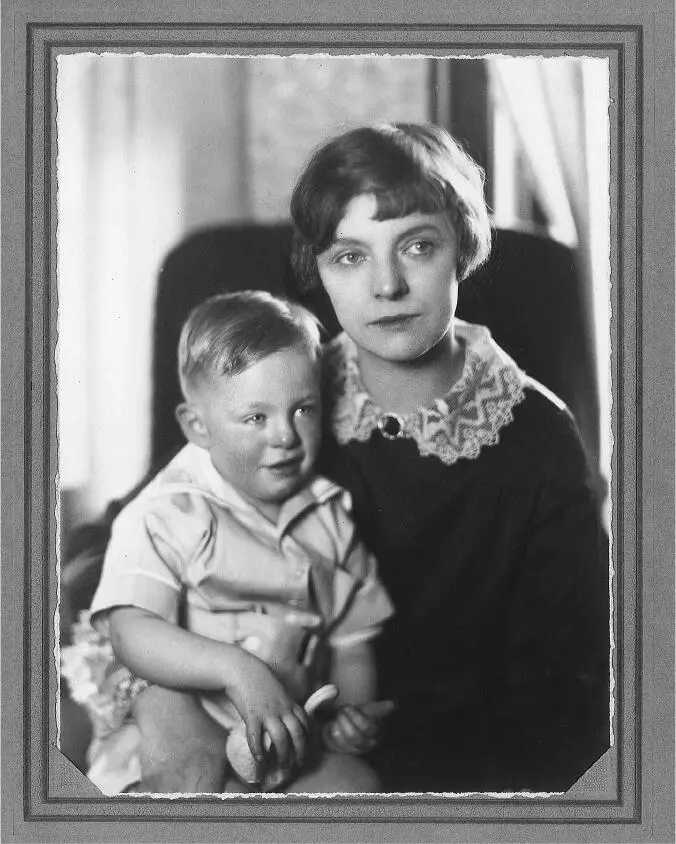
Ted Gorey, age two, with his mother, Helen Garvey Gorey, 1927. (Elizabeth Morton, private collection)
His was “a perfectly ordinary childhood,” Gorey always insisted. 1“The facts of my life are so few, tedious, and irrelevant to anything else,” he once told an interviewer—no doubt with one of the full-body sighs he used as a melodramatic flourish—“there is no point in going into them.” 2
The facts: Edward St. John Gorey was born on February 22, 1925, at St. Luke’s Hospital, Chicago. Father: Edward Leo Gorey, twenty-seven, newspaperman. Got his start as a police reporter, covering local crime. From 1920 to 1933, worked the politics beat for Hearst’s Chicago Evening American , climbing by ’31 to the position of political editor. Later, publicist; still later, aide to an alderman, as Chicago calls the powerful ward representatives who sit on its city council. Mother: Helen Garvey Gorey, thirty-two, stay-at-home mom. Moneyed, Republican, Episcopalian, and of mostly English stock despite their Irish surname, the WASP-y Garveys were several rungs up the socioeconomic ladder from the working-class Goreys, Democrat, devoutly Catholic, and thoroughly Irish, their family line traceable back to the town of Gorey, south of Dublin. (Disapproving noises were heard, on the Garvey side, when they married—cluckings about Helen marrying beneath her station.) Ted—as the younger Edward was known—was a bright kid, well adjusted, well liked. Bookworm, culture vulture, aspiring artist. Attended high school at Francis W. Parker, a progressive private school founded on Deweyite principles. Drafted into the army in ’44. Off to Harvard in ’46.
Even Gorey seemed regretful that his origins didn’t live up to his myth, lamenting that he “did not grow up in a large Victorian house” and noting, with half joking dismay, that his childhood was “happier than I imagine. I look back and think, ‘Oh poetic me,’ but it simply was not true. I was out playing Kick-the-Can along with everybody else.” 3
Of course, he was adroit at throwing sleuths off the scent. When an interviewer sniffed around the subject of his childhood, he led his interlocutor off into the tall grass of a digression or swatted the question aside with a deadpan quip: asked what he was like as a child, Gorey replied, “Small.” 4When all else failed, he pled amnesia. “What’s past is past,” he declared, closing the door on the subject. 5
But the past is never past, not in the dark room of the subconscious, where our childhood memories become more vivid, not less, with age, and certainly not in gothic fiction, where the past we’ve repressed always comes back to haunt us. And much of Gorey’s fiction, whatever else it is—existentialist, absurdist, surrealist—is inescapably gothic. It’s all about the past, from its period settings to its archaic language to the obvious fact that Gorey uses obsolete genres (the Puritan primer, the Dickensian tearjerker, the silent-movie melodrama) to tell his stories.
Gorey’s own story, it turns out, is as full of unsolved riddles and buried secrets as any good mystery, though his childhood looks suspiciously normal at first glance.
It wasn’t.
How normal is teaching yourself to read at the age of three and a half, then cutting your eyeteeth on Victorian novels? Gorey lived up to the myth of the precocious only child, plowing through Dracula and Lewis Carroll’s Alice in Wonderland and Through the Looking-Glass —in the same month , even—between the ages of five and seven, with Frankenstein close on their heels. Dracula scared him to death, he said. By the age of eight, he’d read the collected works of Victor Hugo, he claimed, a herculean labor that perplexed even Gorey himself, retrospectively. “Chloroform!” was his adult verdict. “But I can still remember a Hugo being forcefully removed from my tiny hands when I was about eight so I could eat my supper.” 6
Gorey’s infatuation with Dracula and Frankenstein at an age when most of us are struggling with Charlotte’s Web was an augury: the gothic sensibility is deeply embossed on his work. His encounter with Dracula was especially prophetic, not only because the bat-winged shadow of the gothic would flap across his aesthetic but also because he would owe the sanguinary count his greatest commercial success. Gorey’s costume and set design for the Broadway production of the play based on Bram Stoker’s novel made him the toast of Manhattan theater circles in 1977 and bought him a house on Cape Cod.
Читать дальше
